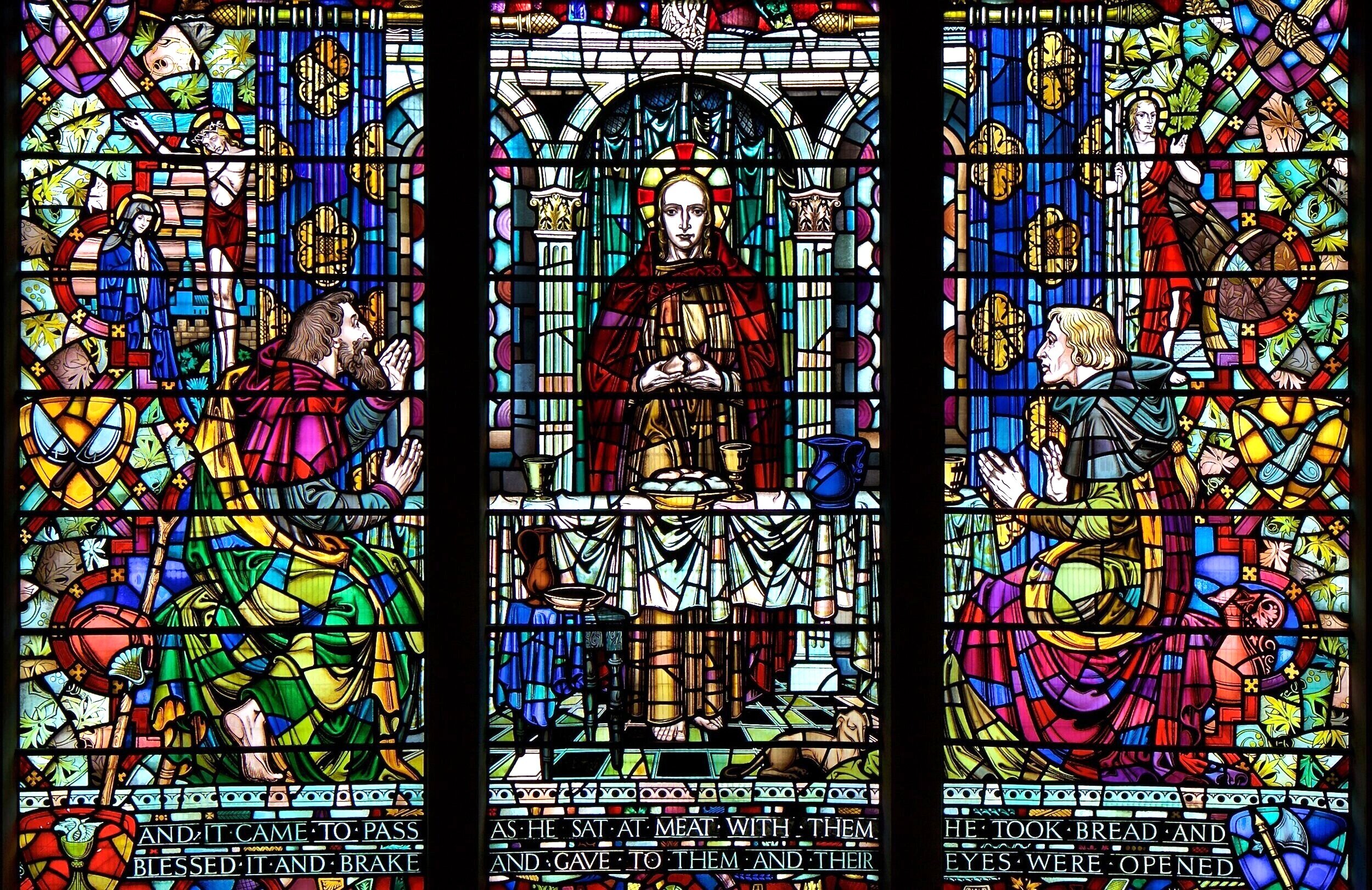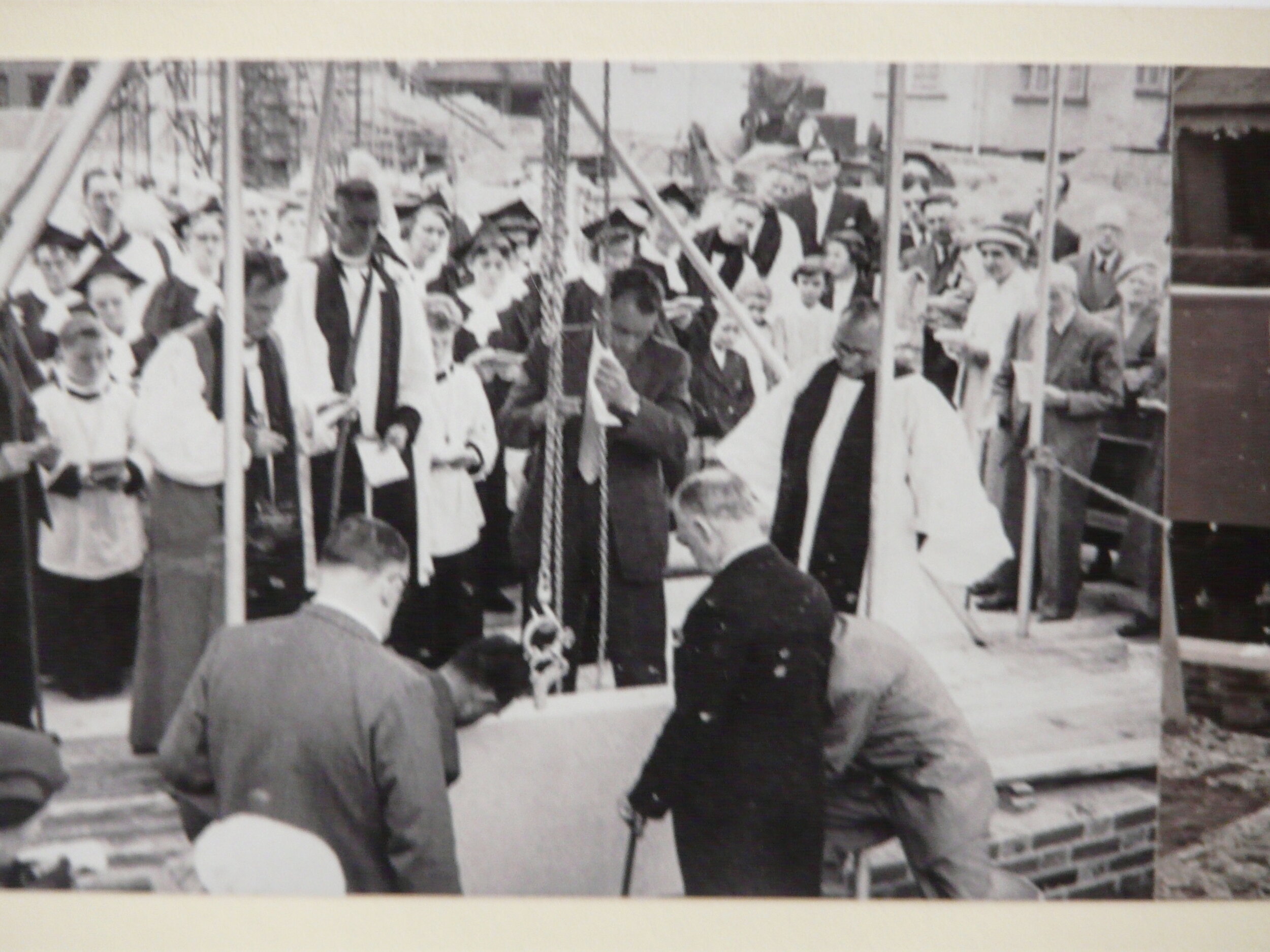
History
1829
A depiction of the original St James’, which was built and consecrated in 1829 on the same site as today’s church.
New beginnings - 1958
The picture above shows St James’ packed on the 13th September, 1958 to celebrate and consecrate the new building, in which we worship today. It was designed by FM Cachemaille Day and displays his bold feature of vaulted concrete roof arches (which you can see in the picture below).
Today in St James’ we have a variety of activities that we hope you might like to join in with, click here to find out more.
2020
The building we worship in today was built in 1958 after the original church was destroyed during the Battle of Britain in 1940.
New beginnings - 2017
The picture above shows ‘new beginnings’ in our congregation today! The beautiful East Window (below) is the work of stained glass artist, Arthur Erridge. The window, which is behind the altar, depicts the story in the Bible of Jesus appearing to two travellers on the Road to Emmaus after his resurrection.
Do feel welcome to come in and have a look at the the stained glass. Or, if you’re out for a walk on Park Hill in the winter months, after dusk, we often light up the East Window from inside so that you can see the beautiful colours shining out on dark nights.
The pictures below show the original church building reduced to rubble on the night of 6th September 1940; a request for prayers and funds to rebuild (the congregation would meet in a fabricated hut next door to the building site for 11 years while the new church was under construction); members of the local community and clergy lay the foundation stone, which you can still see today - see if you can spot it underneath the East Window on the Park Hill side of the church sometimes hidden by our Easter lilies.

2.15am, 6th September, 1940 - church reduced to rubble

In 1947 the church congregation met in a prefabricated hut next door to the original site, and were there for 11 years as the new church was being built.

The new church foundation stone being laid.

Clergy from the area attending the consecration of the new church.

A packed church for the consecration.

St James', Briarwood Rd entrance
St James' magazine, January 1964. Click the picture to read their no-nonsense approach to encouraging church going in St James’ magazine!
All previous vicars of St James' - click on the image to see a larger version
Notable past parishioners. Click on the picture to see a larger version







